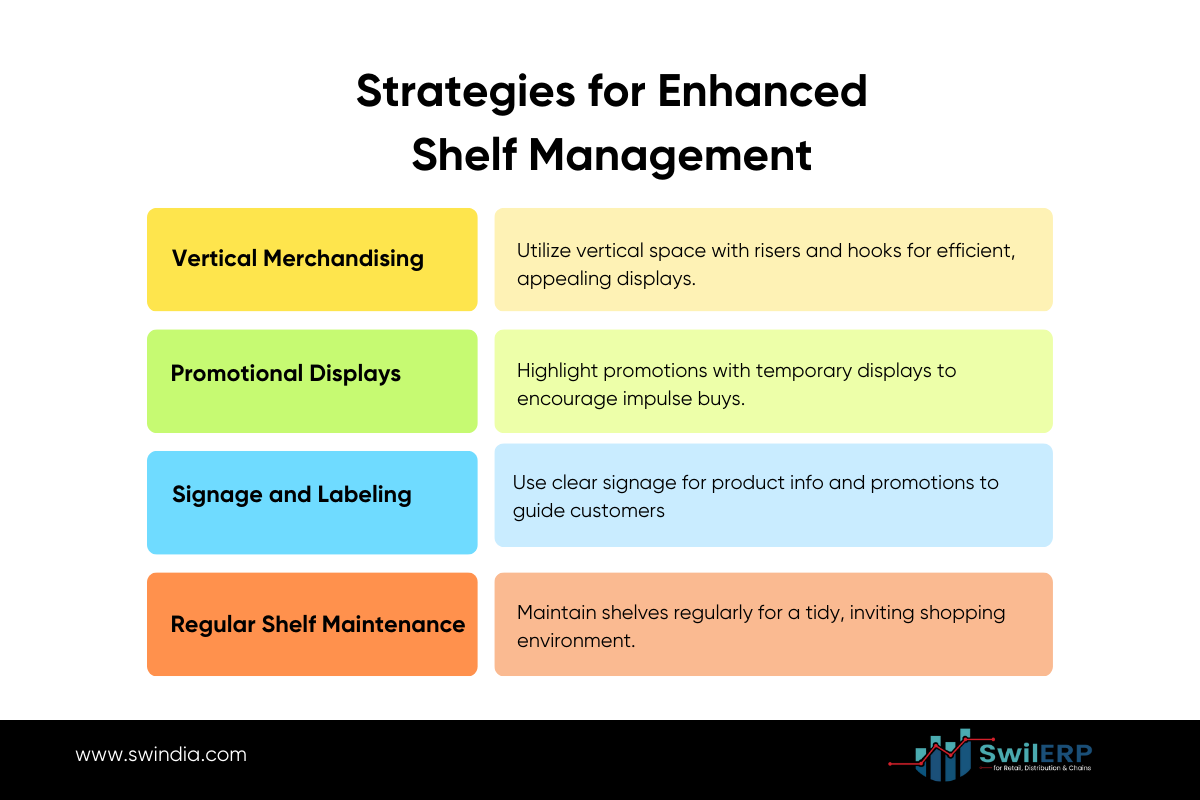For any retail business, shelves are the silent salespeople, silently influencing customer decisions and ultimately impacting sales. But unlike their inanimate counterparts, effective shelf management requires a strategic approach, transforming these shelves into powerful tools for driving sales, enhancing customer experience, and boosting profitability.
Why Effective Shelf Management Matters
Well-organized shelves go far beyond aesthetics. They act as silent magnets, attracting customers, encouraging browsing, and ultimately leading to higher sales:

I. Increased Sales: Imagine walking into a store where products are neatly categorized, readily accessible, and visually appealing. This creates a positive shopping experience, encouraging impulse purchases and leading to higher basket values.
II. Reduced Inventory Costs: Overstocked shelves not only tie up valuable capital but also risk product expiration and waste. Optimized stock levels, achieved through effective shelf management, minimize these costs and ensure products are sold while fresh and in demand.
III. Enhanced Customer Experience: Frustration mounts when customers search endlessly for products or encounter disorganized shelves. Conversely, well organized shelves with clear signage and readily available items translate to a smooth shopping experience, fostering customer satisfaction and loyalty.
Essential Tips for Retail Shelf Management: Beyond the Basics
Effective shelf management isn’t just about placing products on shelves; it’s about strategic organization and presentation:

Categorization and Segmentation:
Imagine a grocery store where spices are scattered amongst cleaning supplies. Confusion reigns! Grouping similar products by category (dairy, snacks), brand (specific coffee brands), or function (cleaning solutions) creates order and navigation for customers, saving them precious time and effort.
Prime Placement:
Ever heard of the “golden zone”? This refers to the eye-level shelf space, where products grab maximum attention. Place high-demand, profitable items, or those with eye-catching packaging, within this prime zone to maximize visibility and sales. Less frequently purchased items can be placed strategically on lower or higher shelves, ensuring their accessibility while maximizing space utilization.
Stock Rotation and Facing:
Imagine buying a carton of milk only to discover it’s expired. The FIFO (First-In, First-Out) system ensures older products are sold first, preventing spoilage and maintaining product freshness. Maintaining consistent product facing, where all items are arranged uniformly, not only creates a visually appealing display but also simplifies restocking and inventory management.
Planogram Compliance:
Think of planograms as blueprints for your shelves, dictating product placement, quantities, and facings across stores. Adhering to planograms ensures consistency and reduces confusion for both customers and staff. However, remember to review and adjust planograms based on sales data, customer feedback, and seasonal trends to remain adaptable and maximize effectiveness.
Additional Strategies for Enhanced Shelf Management: Taking it a Step Further
Beyond the basics, several strategies can further elevate your shelf management game:

➤ Vertical Merchandising: Leverage the entire shelf space by utilizing risers, shelves, and hooks to create visually appealing and space-efficient displays. This is particularly beneficial for smaller stores or when showcasing specific product categories.
➤ Promotional Displays: Create temporary displays to highlight new arrivals, seasonal items, or promotional offers. This not only grabs customer attention but also encourages impulse purchases and boosts sales of specific products.
➤ Signage and Labeling: Clear and informative signage is crucial for product identification and customer guidance. Utilize signage to highlight promotions, provide product information, and direct customers to specific categories.
➤ Regular Shelf Maintenance: A tidy and organized shelf appearance is key. Regularly restock products, address empty spaces promptly, and remove outdated items to maintain a visually appealing and inviting shopping environment.
Conclusion:
Effective shelf management is an ongoing process, not a one-time fix. By carrying out these procedures, continuously checking performance, and adjusting to evolving trends, you can change your shelves more than just storage spaces, making a consistent and fulfilling shopping experience for your clients and at the impelling your retail business towards progress. Recall that the path to mastering shelf management is paved with ongoing education, trial and error, and a commitment to going above and beyond for customers.
So, step onto this path, armed with these valuable insights, and unlock the full potential of your silent salespeople – your shelves!









